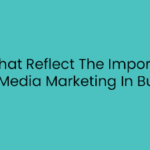
What Is Search Intent? Quick Tips To Optimize Content
As Google evolves its algorithm now and then, it’s become increasingly challenging to engage web users. Gone are the days when inserting appropriate keywords was enough to rank your content. Nowadays, keywords don’t cut in. You must consider the search intent behind what those potential customers are searching for to provide the most value for your audience.
So, here the question arises – What exactly is the search intent, and how can you optimize your content for it? If you are struggling with these questions, you’ve reached the right place to resolve your queries. Continue scrolling the page and discover how to create content that resonates with your target audience and drives more traffic to your site. Let’s get started.
Table of Contents
What is Search Intent?
Search Intent, also known as user or customer intent, is the key reason why users go to a search engine and enter a query. When a user visits a search engine, he has a specific goal in mind to accomplish with his search.
Understanding search intent has become important as web users get harder and harder to engage. Search intent is included in most cases of e-commerce context, where marketers need to match their landing page to their target customer’s expectations.
But have you ever considered where does the concept of search intent stand in the content marketing context? What does it mean for content marketing? Remember that the faster your site’s content resolves the readers’ queries, the higher the chances they will stick around instead of moving on to your competitor.
Search Intent reflects why a user is performing a web search. Three major types of search intent are available, based on the basic and simplified levels.
- Do: The search user is ready to act.
- Know: A search user is looking for information.
- Go: Search users know which site or brand they want to go to.
With Google always trying to satiate its users better and making successful attempts at understanding each search query, optimizing your content for search intent has become key to search visibility.
5 Ways to Optimize Content for Search Intent
Optimizing content for search intent attracts the right customers to your site. More importantly, it keeps the bounce rate at a minimum, thus improving your website’s ranking in the search engine.
Here’s a quick rundown of the best ways to optimize your web pages for search intent.
-
Think about how people search
The key to optimizing content for search intent is to determine how your target audience search. The market is packed with tons of tools and optimization practices. These help you know how often queries were used and home many of those resulted in page visits.
These tools also let you calculate the rate at which impressions are generating a click. In addition, you can also check the average ranking in the organic search results for a specific keyword.
-
Dissect Intent from Queries
Online users do not always share their preferences. Hence, marketers must optimize their content for both active queries (presented intent) and hidden queries (hidden intent).
Active Queries are basically the search intent explicitly described by the query syntax. On the other hand, passive queries are those you need to draw out from intent. It is vital to satisfy active and passive queries to drive users’ engagement and conversion.
-
Leverage all search engines and online platforms
Ignoring search engines and other online platforms when making optimization strategies could mean missed opportunities to rank on them. Although Google is one of the leading and most popular search engines of all time, you also make additional efforts to check out other search engines to stay ahead of the curve.
It helps you attract the target audience, so you can get better and higher on other platforms, like Bing and YouTube. These are widely acclaimed online platforms and are almost always taken for granted.
So, if you are ignoring these platforms, you might ignore an entire subset of people who really don’t care as much about the Google experience.
-
Map queries to answers
There’s no one-size-fits-all approach when it comes to finding a user’s search intent. It can’t be ignored that online users have different search intents.
So, how can you be receptive to their needs or understand their interests? As a marketer, you must map out queries and optimize the content for both presented and hidden user intent.
Think about the different ways people ask questions or analyze the difference in verbiage. Check your target audience’s local language and consider how people from multiple locations might search the web.
Mapping search terms or queries allows you to make specific SEO recommendations to help improve the relevance of your website.
Summing Up
The key to effective Google search intent optimization is to offer consistent and detailed information on your website. Present your content into digestible pieces and strategically place the keywords. It’s always good to put your customers first and identify their search intent to create content that satisfies their needs in the best possible way.






